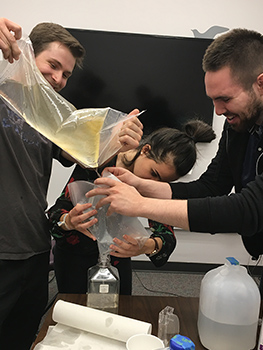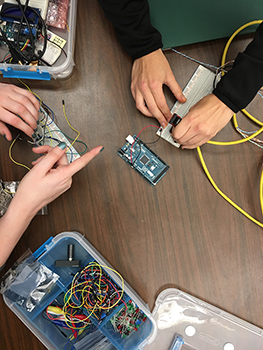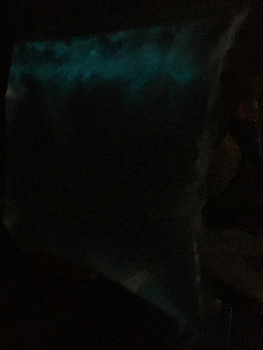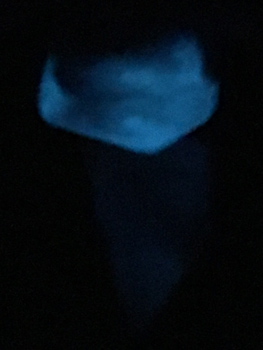Leah Pistorius
December 20, 2017
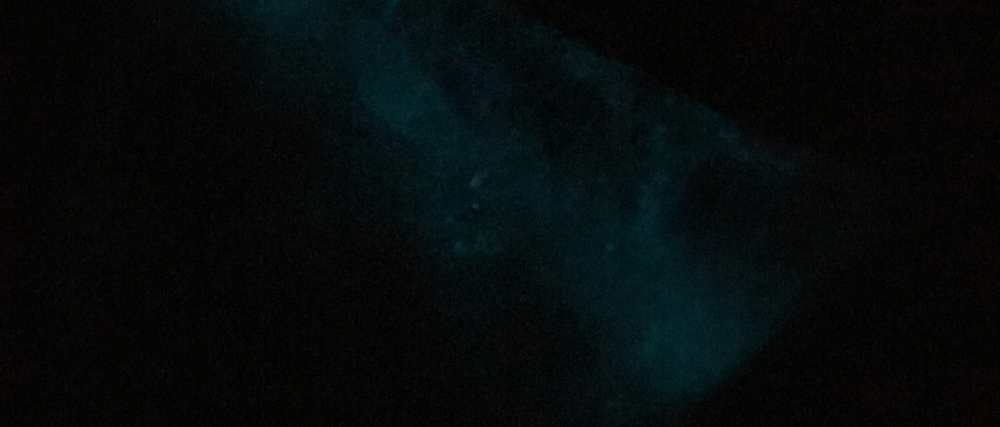
In Autumn 2017, Human Centered Design & Engineering faculty members Brock Craft and Tyler Fox launched a new Directed Research Group to give students hands-on experience creating displays using living organisms.
Blending practices rooted in physical computing, interaction design, interactive art, creative coding, and marine biology, the group experimented with bioluminescence—light emitted when a certain type of algae is disturbed—and its function conveying information in a display.
Due to the aquatic nature of bioluminescence, the student team of Lauren Antilla, Yuka Asanuma, Rabea Baroudi, Ted McDonald, Emily Rosenfield, Alyssa Spickermann, and Finn Thompson, focused their project on displaying tide level predictions from the greater Seattle area in 2016. Using tidal data from NOAA, The students wrote a program using the electronic prototyping platform Arduino that controlled when to activate an electromagnet to agitate the algae and produce bioluminescence.
The group exhibited their display in an end-of-quarter showcase on December 6, 2017, in Sieg Hall. The bioluminescence was visible in complete darkness, as pouches of algae corresponding with the high and low points of daily tides were agitated with the Arduino behind the scenes. The team enhanced the experience of watching the living display by including audio of ocean waves.
Fox and Craft plan to continue experimenting with new applications for this Directed Research Group topic in the future.
